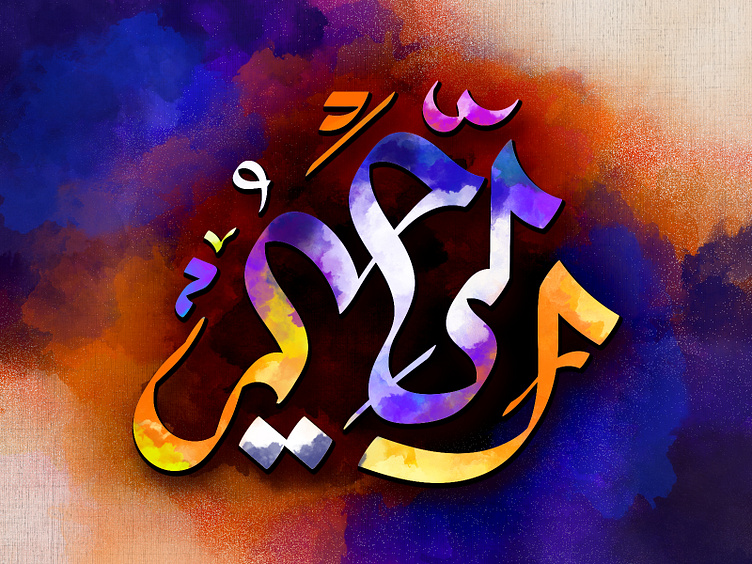Calligraphy: Ar-Raheem
Calligraphy: Ar-Raheem (The Merciful)
Sketch
Sketching plays a crucial role in the calligraphy process, setting the foundation for a successful final composition.
Calligraphy is known for its smooth and continuous flow of strokes. Sketching helps you establish the rhythmic movement and connectivity between letters, ensuring a seamless and elegant script.
Sketching provides an opportunity to refine the shape and structure of each letter. It allows you to experiment with different variations, test different styles, and make adjustments to achieve the desired aesthetic and legibility.
Painting
Coloring plays a significant role in calligraphy, adding depth, vibrancy, and visual interest to the artwork.
Color brings life and personality to calligraphy. It adds visual appeal, making the artwork more captivating, dynamic, and eye-catching. With the right choice of colors, you can evoke emotions, create a mood, and make a powerful impression on the viewer.
Coloring helps in emphasizing and distinguishing the letterforms in calligraphy. By using different hues, shades, or gradients, you can create contrast, depth, and dimension, making each letter stand out and ensuring clarity and legibility.
Mockup
After completing the final coloring in calligraphy, utilizing mockups becomes essential to showcase and present your artwork in a realistic and professional manner.
Mockups provide a realistic representation of artwork taht would appear in real-life settings. They allow you to visualize how the piece would look on screens, giving clients or viewers a clear idea of the final product.






